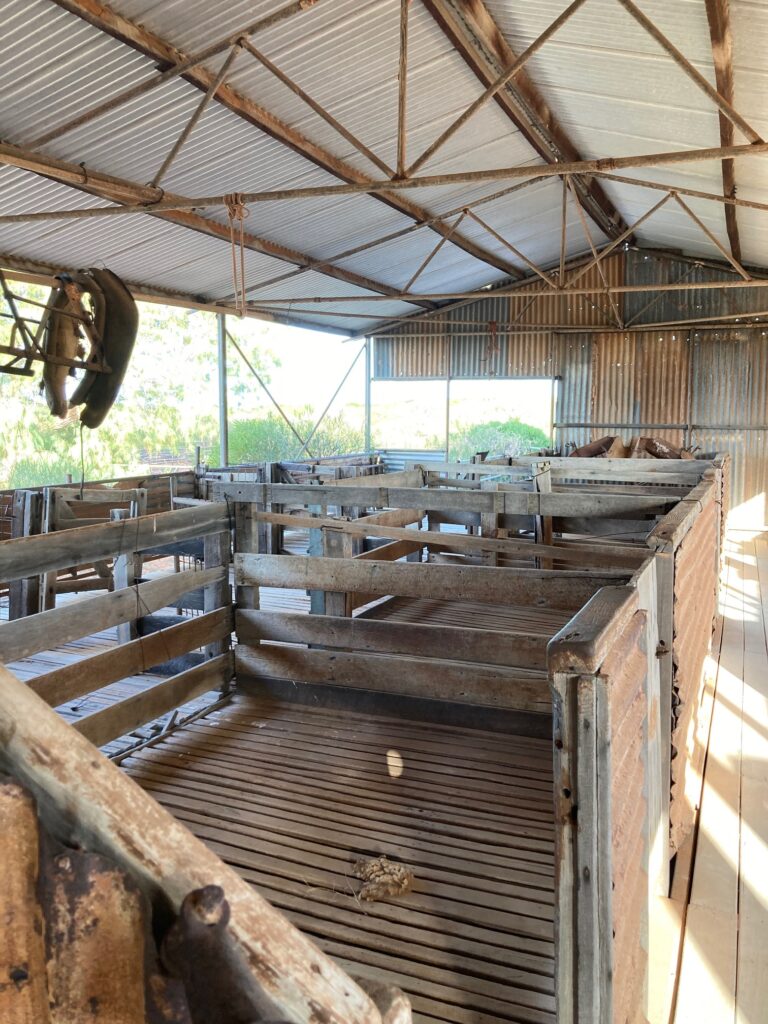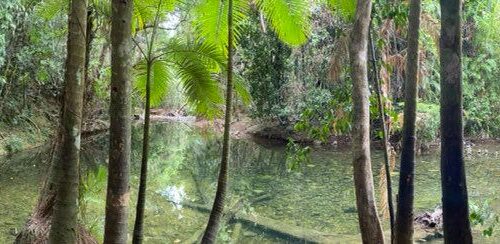Shark Bay is the first World Heritage Listed site in Western Australia; a highly underrated piece of paradise that pays homage to unique species, hectares of red landscapes, and tranquil lagoons that set the ideal scene for an esky full of afternoon beers.
If you’re a stickler for the campfire tales, you might also take interest in the maritime history that lies beneath the layers of its beauty, which marked the beginning of European exploration in the unknown south land.
To cut to the chase when it comes to recreational fishing, the animated fishing shirts and “yeah nah” energy is wildly abundant during holiday periods, but there’s still every chance you’ll leave with an esky full of everything but disappointment when wading these waters. Some common catches among the 320 fish species include Spanish Macky, Trevally, Pink Snapper and Bream which creates healthy competition for self-proclaimed water legends. There’s a pretty good chance that you’ve already indulged in a catch from Shark Bay if you’ve dined in any of the state’s finest seafood restaurants—whether it be fish, scallops, crays or otherwise!
A combination of both temperate and tropical waters also provide ideal growing conditions for marine meadows. These meadows consist of up to twelve of the world’s sixty species of seagrass that offer nutrients, sanction and an overall good feed for green turtles and the ocean’s true sea dogs: dugongs.
However, the outstanding attraction is the very reason Shark Bay has made a major mark on the map: the natural phenomena of Stromatolites. Now, to drop the pompous edge of a chick who actually knows what she’s talking about, Stromatolites are pretty epic. They offer insight as to what marine ecosystems looked like over three billion years ago, and Shark Bay is one of the very few places they’ve been discovered across the globe.
To give a brief (and pretty uneducated) science spill on what they actually are, Stromatolites occur when small communities of microbes and bacteria trap particles and harden to create stone-like structures. The product visually showcases the evolution of the earth’s biosphere—a process which takes thousands of years to reach heights as little as two metres.
The reason Stromatolites form here (in Hamelin Pool specifically) and nowhere else is because of restricted water-flow. This increases the salinity of the pool and limits other organisms from surviving to act as predators to the microbes. What I found particularly cool is that the movement of water plays a part in shaping the structure of these mounds over the years, meaning that while no two are the same, there’s still a natural synchronicity to them.
While struggling to narrow down the itinerary, a visit to Shell Beach was absolutely essential during the short stay. True to its name, in place of the usual grains of sand is an endless carpet of intricate little seashells, filling the atmosphere with a luminous white glow for a picture-perfect contrast against the water.
While staying in town, I was super lucky to be taken under the wing of a local tour guide who spent the afternoon running me round to some of the best spots off the rugged red tracks. It’d be far too easy to spend a day kayaking or floating around in the crystal shallows of Little Lagoon. And if you think that’s impressive, Big Lagoon is an absolute spectacle. It’s tucked within the dense bushland of Francois National Park and surrounded by a spread of campsites that you just know would host the best of boogie’s over the Summer.
En route to Big Lagoon is Peron Homestead, a retired shearing shed and quarters that create a strong visual of flannelettes and Fridays arvos at the pub. The homestead offers public access to an artesian hot tub, which is entirely yours for the taking if you pick your timing well. Regardless of whether it’s placebo or not, there’s something about a hot tub in the middle of the bush with no people around and a starry sky that heals all.
While this article touches on a few of the more hidden spots within the area, you’ve also probably heard of the famed township of Monkey Mia which lives around 26km away from Denham. Regular feeding times attract a pod of dolphins to the water’s edge, and although I’m not generally one to get amongst the busy tourist operations, copping a phat grin from a dolphin really does have the potential to make your year.
You can learn plenty about what makes this place exclusive via a browse through the Shark Bay World Heritage & Discovery Centre, but like with most of Western Australia’s small and remote coastal regions—it’s best explored under the guise of a die-hard local. What came out of a few brewskis at the local pub was a desire to explore that got me bogged on more than one occasion. But the red and blue landscapes of the Francois Peron National Park were every bit worth the damage to my pride. With coastal lookouts at every turn and the infamous Dirk Hartog Island just a stone’s throw away, I would’ve loved to have had an extra day or two to give this place the time it deserves.

















